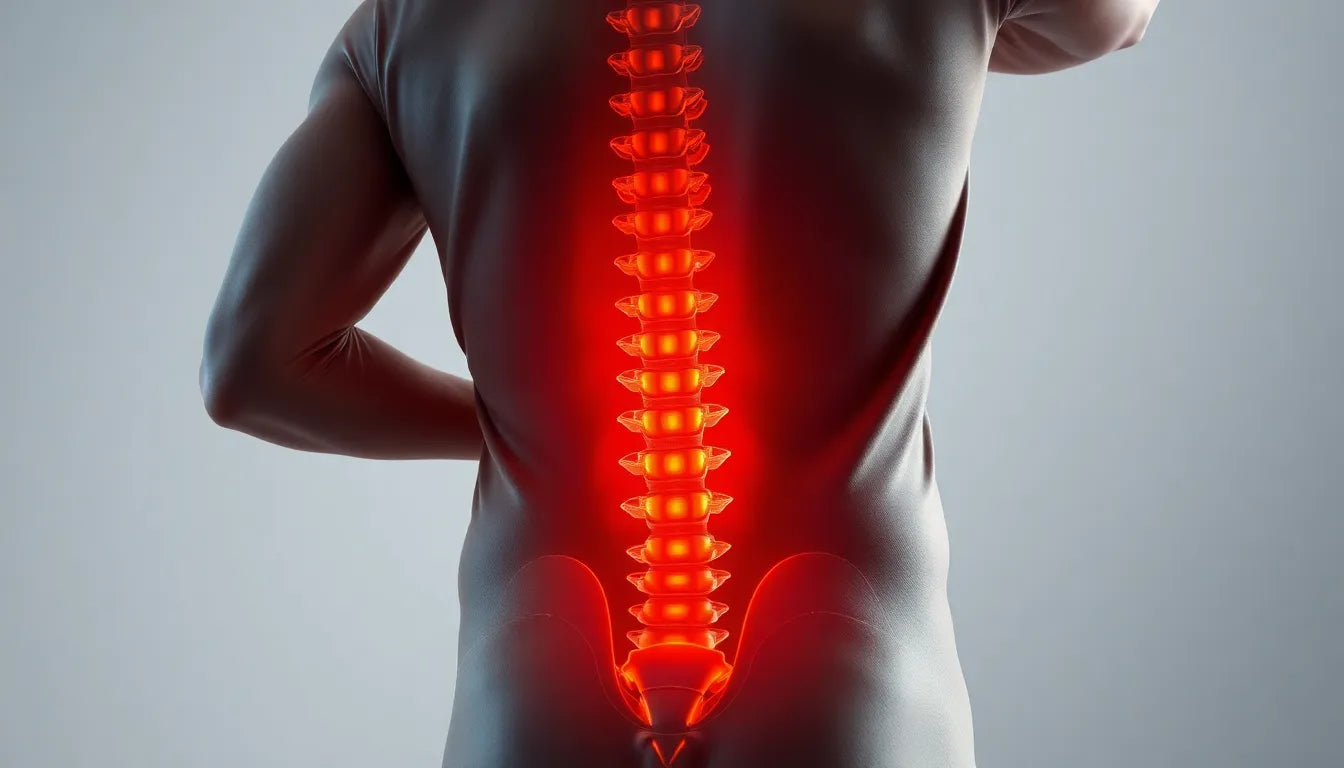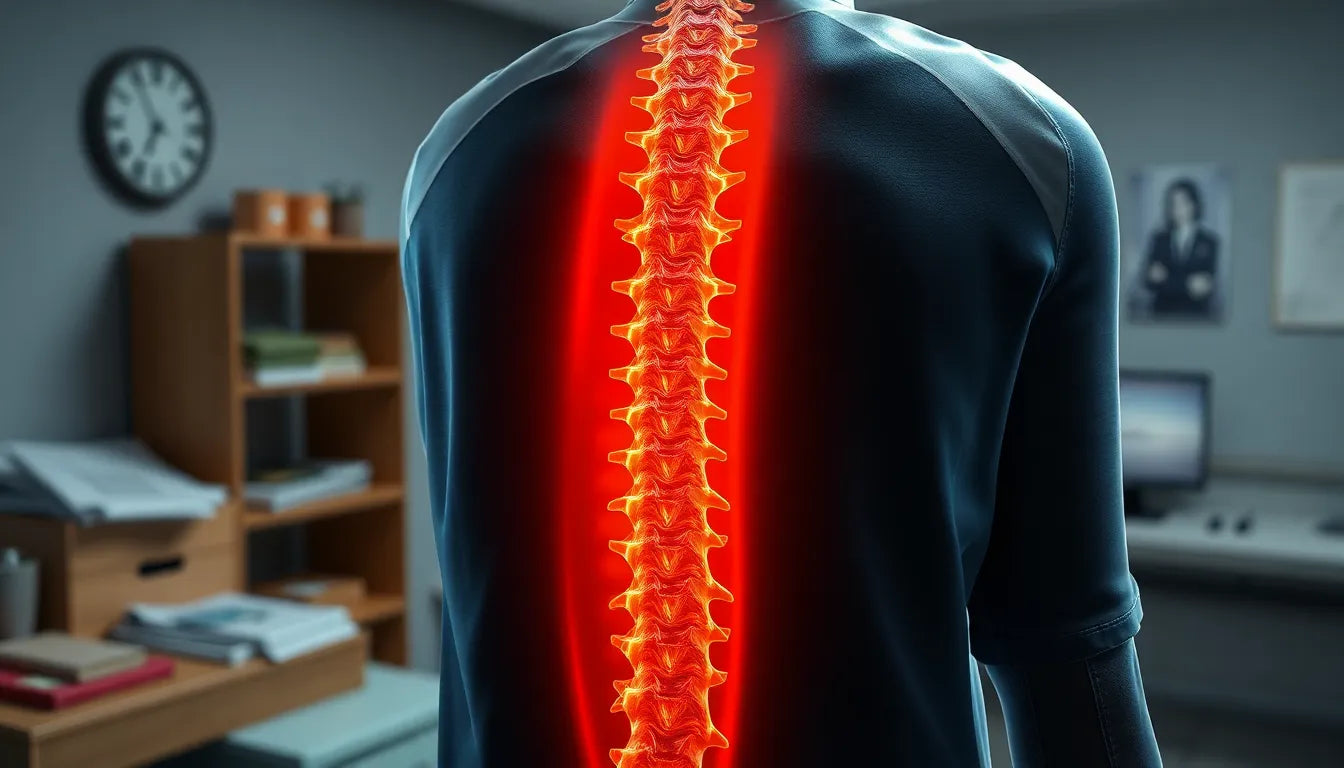Back pain is a prevalent issue that affects millions of people worldwide, and one of the most common culprits is a herniated disc. Understanding what a herniated disc is and how it can lead to blockages in the back is crucial for anyone experiencing persistent back discomfort. A herniated disc occurs when the soft, jelly-like center of an intervertebral disc pushes through a crack in the tougher exterior casing. This condition can result in significant discomfort and is often linked to blockages in the back, where the displaced disc material presses on the spinal nerves.
Understanding the basics
The spine is a complex structure composed of a series of bones called vertebrae, which are cushioned by intervertebral discs. These discs act as shock absorbers, allowing for flexibility and movement while protecting the spinal cord and nerves. When a disc herniates, it can lead to pressure on the nerves, causing pain and other symptoms known as a blockage in the back. This blockage can disrupt the normal function of the spine and lead to a range of issues affecting daily life.
The impact of herniated discs
Herniated discs can have a profound impact on an individual's quality of life. The pressure exerted on the spinal nerves can cause severe pain, numbness, or weakness in the back, legs, or arms, depending on the location of the herniation. This can significantly limit mobility and make everyday tasks challenging. The discomfort and restricted movement can affect everything from walking and sitting to lifting and bending, making it essential to address the issue promptly.
Purpose of the post
The purpose of this post is to delve deeper into the intricacies of herniated discs and back blockages. By exploring the symptoms, causes, and treatment options, we aim to provide a comprehensive understanding of this condition. Gaining insight into these aspects is vital for effective management and relief, empowering individuals to make informed decisions about their health. Whether you're experiencing symptoms or seeking preventive measures, understanding herniated discs is the first step towards unlocking relief and improving your overall well-being.
Medical explanations and symptoms of herniated discs
Herniated discs occur when the inner gel-like core of an intervertebral disc pushes out through a tear in its outer layer. This condition is often the result of wear and tear, known as disc degeneration, and can be exacerbated by sudden strain or injury. According to leading medical sources like the American Academy of Orthopaedic Surgeons (AAOS) and the Cleveland Clinic, the most common symptoms of a herniated disc include persistent lower back pain, sciatica, which manifests as sharp pain radiating down the leg, numbness or tingling in the extremities, and muscle weakness. These symptoms arise because the displaced disc material puts pressure on nearby spinal nerves, leading to what is often described as a blockage in the back.
Diagnosis of herniated discs
Accurate diagnosis of a herniated disc is crucial for effective treatment. The diagnostic process typically begins with a thorough medical history and physical examination, focusing on the patient's symptoms and any factors that may have contributed to the condition. Neurological examinations are often conducted to assess muscle strength, reflexes, and sensory response. Imaging tests, such as MRI or CT scans, provide detailed images of the spine, allowing healthcare professionals to pinpoint the location and severity of the herniation. Early diagnosis is key to preventing further complications and tailoring the most effective treatment plan.
Causes and risk factors
Several factors can contribute to the development of herniated discs. Age-related degeneration is the most common cause, as the discs naturally lose their water content and elasticity over time, making them more prone to tears. Improper lifting techniques, such as bending at the waist instead of the knees, can also lead to herniation. Additionally, a sedentary lifestyle, which weakens the muscles that support the spine, increases the risk. Being overweight places extra stress on the spine, and repetitive strain from certain activities can exacerbate the condition. Understanding these causes and risk factors is essential for both prevention and management.
Preventive measures for herniated discs
Preventing herniated discs involves adopting habits that promote spinal health. Safe lifting techniques, such as lifting with the legs and keeping the load close to the body, are crucial. Regular exercise strengthens the core muscles that support the spine, reducing the risk of injury. Maintaining a healthy weight alleviates undue stress on the spinal structure. Ergonomic adjustments, like using supportive chairs and ensuring proper posture during activities, can also help prevent disc herniation. By incorporating these preventive measures into daily life, individuals can significantly reduce their risk of developing herniated discs and the associated blockages in the back.
Treatment options for herniated discs
When it comes to managing herniated discs and the associated blockages in the back, there are several treatment options available. Non-surgical treatments are often the first line of defense and can be highly effective in alleviating symptoms. Physical therapy plays a crucial role in strengthening the muscles around the spine, improving flexibility, and reducing pressure on the affected nerves. Pain medications, such as non-steroidal anti-inflammatory drugs (NSAIDs), can help manage pain and inflammation, providing relief for many patients.
Lifestyle modifications are also essential in managing herniated discs. This includes maintaining a healthy weight, avoiding activities that exacerbate symptoms, and incorporating exercises that promote spinal health into daily routines. In cases where non-surgical treatments do not provide sufficient relief, surgical options may be considered. Procedures such as discectomy or laminectomy can be performed to remove or relieve pressure on the affected disc, providing significant relief for severe cases.
The role of ergonomic aids
Ergonomic aids can be instrumental in both alleviating symptoms of herniated discs and preventing further injury. These aids are designed to support proper posture and reduce strain on the spine. In the workplace, ergonomic chairs and adjustable desks can help maintain spinal alignment and reduce the risk of exacerbating back issues. At home, using supportive pillows and mattresses can improve sleep quality and reduce discomfort.
Simple changes, such as adjusting the height of computer monitors or using footrests, can also make a significant difference. By integrating ergonomic principles into daily life, individuals can create a more supportive environment that promotes spinal health and reduces the risk of future herniations.
Concluding thoughts
Understanding and addressing herniated discs and back blockages is essential for maintaining a healthy and active lifestyle. By exploring the various treatment options and incorporating ergonomic aids, individuals can manage symptoms effectively and prevent further complications. It is crucial to seek professional advice to develop a personalized treatment plan tailored to individual needs and circumstances. With the right approach, relief is achievable, and quality of life can be significantly improved.
Frequently Asked Questions
What is the difference between a bulging disc and a herniated disc?
A bulging disc occurs when the outer layer of the disc extends beyond its normal boundaries, while a herniated disc involves a tear in the outer layer, allowing the inner gel-like core to protrude. Herniated discs are generally more severe and can cause more pronounced symptoms.
Can a herniated disc heal on its own?
Yes, a herniated disc can heal on its own over time. The body can reabsorb the protruding material, and symptoms may gradually improve. Factors such as overall health, activity level, and adherence to treatment plans can influence the recovery process.
How can I prevent a herniated disc from recurring?
To prevent recurrence, focus on maintaining a healthy weight, incorporating exercises that strengthen core muscles, and practicing proper lifting techniques. Ergonomic adjustments in daily activities and work environments can also help reduce the risk of future herniations.
When should I see a doctor for a herniated disc?
It is advisable to see a doctor if you experience persistent pain, numbness, or weakness that does not improve with rest and self-care measures. Immediate medical attention is necessary if you experience loss of bladder or bowel control or severe weakness, as these may indicate a more serious condition.























